On Producing Long-Lived Spin Polarized Metastable Atoms—Feasibility of Storing Electric Energy †
Abstract
:Author Contributions
Funding
Conflicts of Interest
References
- Wikipedia: Rätselhaftes Gewitterphänomen und Mythos Kugelblitz. Available online: http://en.wikipedia.org/wiki/User:Binadot (accessed on 11 June 2022).
- Einstein, A.; de Haas, W.J. Experimenteller Nachweis der Ampereschen Molekularströme. Verhdlgn. DPG 1915, 17, 152. [Google Scholar]
- Donets, E.D. The Electron Beam Method of Production of Highly Charged Ions and Its Applications. Phys. Scr. 1983, T3, 11. Available online: https://iopscience.iop.org/article/10.1088/0031-8949/1983/T3/003/meta (accessed on 12 June 2022). [CrossRef]
- Briand, J.P.; De Billy, L.; Charles, P.; Essabaa, S.; Briand, P.; Geller, R.; Desclaux, J.P.; Bliman, S.; Ristori, C. Production of hollow atoms by the excitation of highly charged ions in interactio with a metallic surface. Phys. Rev. Lett. 1990, 65, 159. Available online: https://journals.aps.org/prl/abstract/10.1103/PhysRevLett.65.159 (accessed on 12 June 2022). [CrossRef] [PubMed]
- Winter, H. Image charge acceleration of multi-charged argon ions in grazing collisions with an aluminum surface. EPL Europhys. Lett. 1992, 18, 207. Available online: https://iopscience.iop.org/article/10.1209/0295-5075/18/3/004/meta (accessed on 12 June 2022). [CrossRef]
- Kurz, H.; Töglhofer, K.; Winter, H.P.; Aumayr, F.; Mann, R. Electron emission from slow hollow atoms at a clean metal surface. Phys. Rev. Lett. 1992, 69, 1140. Available online: https://journals.aps.org/prl/abstract/10.1103/PhysRevLett.69.1140 (accessed on 12 June 2022). [CrossRef] [PubMed]
- Das, J.; Morgenstern, R. Measurement of autoionization rates for electron emission above a metal surface. Phys. Rev. A 1993, 47, R755. Available online: https://journals.aps.org/pra/abstract/10.1103/PhysRevA.47.R755 (accessed on 12 June 2022). [CrossRef] [PubMed]
- Grether, M.; Spieler, A.; Köhrbrück, R.; Stolterfoht, N. Dynamic K- and L-shell filling of Ne9+ projectiles interacting with an Al (111) surface. Phys. Rev. A 1995, 52, 426. Available online: https://journals.aps.org/pra/abstract/10.1103/PhysRevA.52.426 (accessed on 12 June 2022). [CrossRef] [PubMed]
- Ninomiya, S.; Yamazaki, Y.; Koike, F.; Masuda, H.; Azuma, T.; Komaki, K.; Kuroki, K.; Sekiguchi, M. Stabilized hollow ions extracted in vacuum. Phys. Rev. Lett. 1997, 78, 4557. [Google Scholar] [CrossRef]
- Research with Highest Electromagnetic Fields—Helmholtz-Zentrum Dresden-Rossendorf, HZDR. Available online: https://www.hzdr.de/db/Topics?pld=60&pNid=0 (accessed on 11 June 2022).
- Surzhykov, A.; Physikalisch Technische Bundesanstalt, 38116 Braunschweig, Germany; Fritzsche, S.; University of Jena, Jena, Germany. Personal communication, 2012.
- Schmidt-Böcking, H.; Jagutzki, O.; Mergel, V.; Stöhlker, T.; Dörner, R.; Stiebing, K.E.; Spielberger, L.; Schneider, D. Verfahren und Vorrichtung zur Herstellung eines Energiespeichers. Deutsches Patent 1999 DE 197 05 520 C 2. Available online: https://patents.google.com/patent/DE19705520C2/de (accessed on 12 June 2022).
- Geller, R. Electron cyclotron resonance sources: Historical review and future prospects. Rev. Sci. Instrum. 1998, 69, 1302–1310. [Google Scholar] [CrossRef]
- Zapfe, K.; Braun, B.; Gaul, H.G.; Grieser, M.; Povh, B.; Rall, M.; Steffens, E.; Stock, F.; Haeberli, W. High density polarized hydrogen gas target for storage rings. Rev. Sci. Instrum. 1995, 66, 28–31. Available online: https://aip.scitation.org/doi/abs/10.1063/1.1146388 (accessed on 12 June 2022). [CrossRef]
- Gerlach, W.; Stern, O. Der experimentelle nachweis der richtungsquantelung im magnetfeld. Z. Phys. 1922, 9, 349–352. Available online: https://link.springer.com/article/10.1007/BF01326983 (accessed on 12 June 2022). [CrossRef]
- Gerlach, W.; Stern, O. über die richtungsquantelung im magnetfeld. Ann. Phys. 1924, 74, 673. Available online: https://onlinelibrary.wiley.com/doi/abs/10.1002/andp.19243791602 (accessed on 12 June 2022). [CrossRef]
- Hund, F. Zur Deutung der Molekelspektren, I. Z. Phys. 1927, 40, 742–764. [Google Scholar] [CrossRef]
- Hund, F. Zur Deutung der Molekelspektren, II. Z. Phys. 1927, 42, 93–120. [Google Scholar] [CrossRef]
- Schmidt-Böcking, H.; Jagutzki, O.; Mergel, V.; Stöhlker, T.; Dörner, R.; Stiebing, K.E.; Spielberger, L.; Schneider, D. On the Formation of “quasi stable” Hollow Atoms towards a High Power Electric Energy Storage. In Proceedings of the 5th International Symposium on Ball Lightnings (ISBL), Niigata, Japan, 26–29 August 1997; p. 133. [Google Scholar]
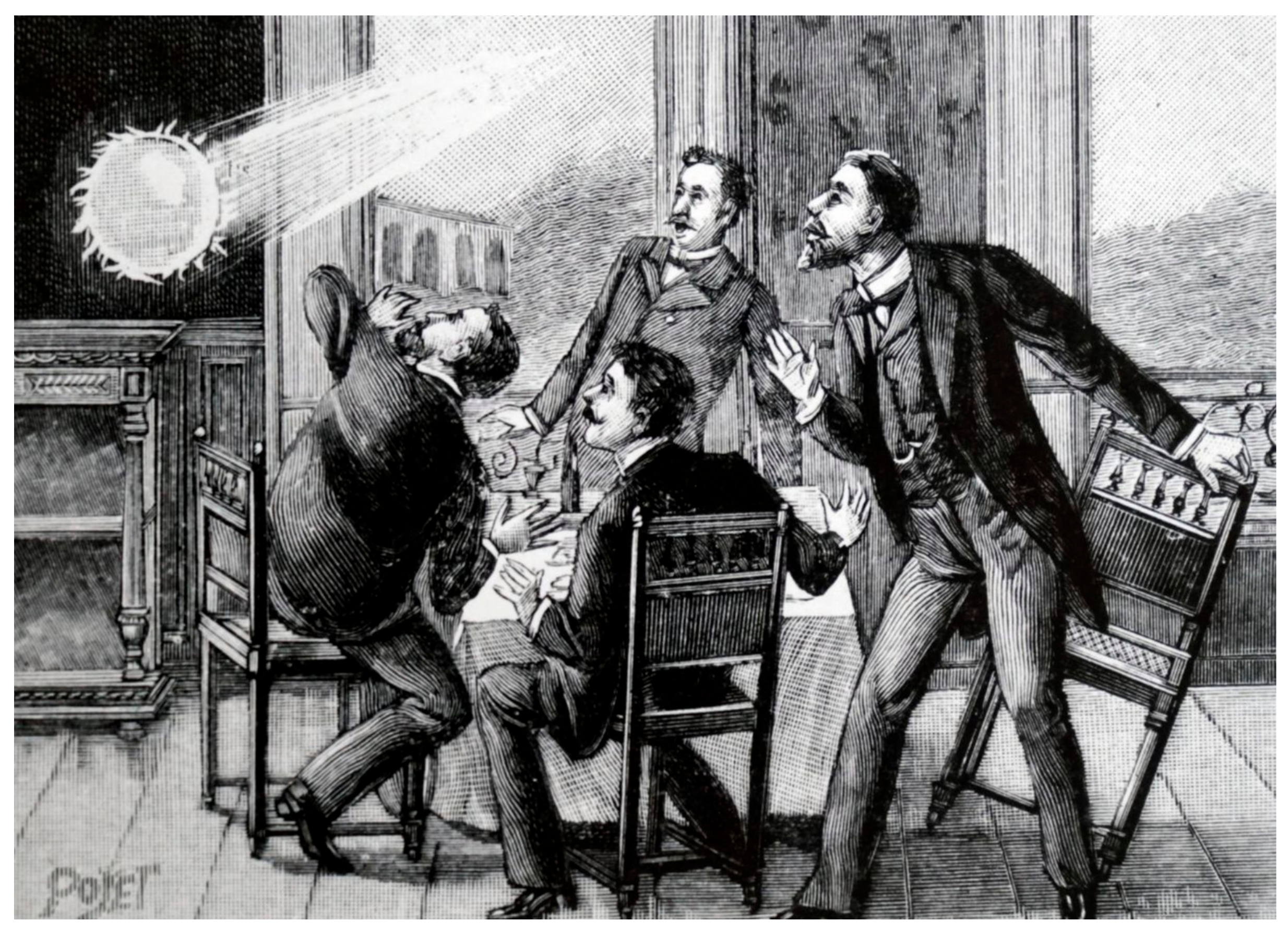
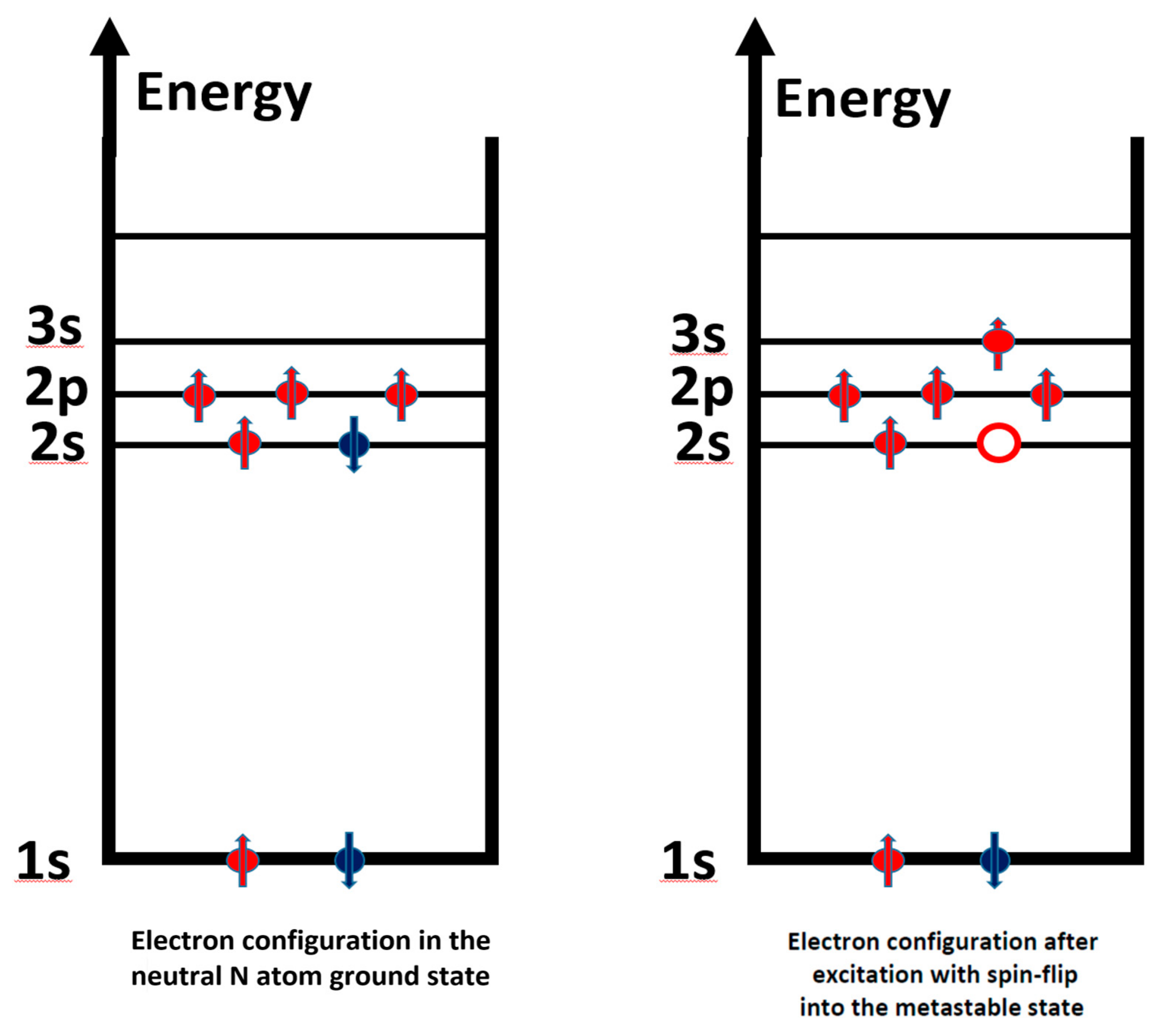
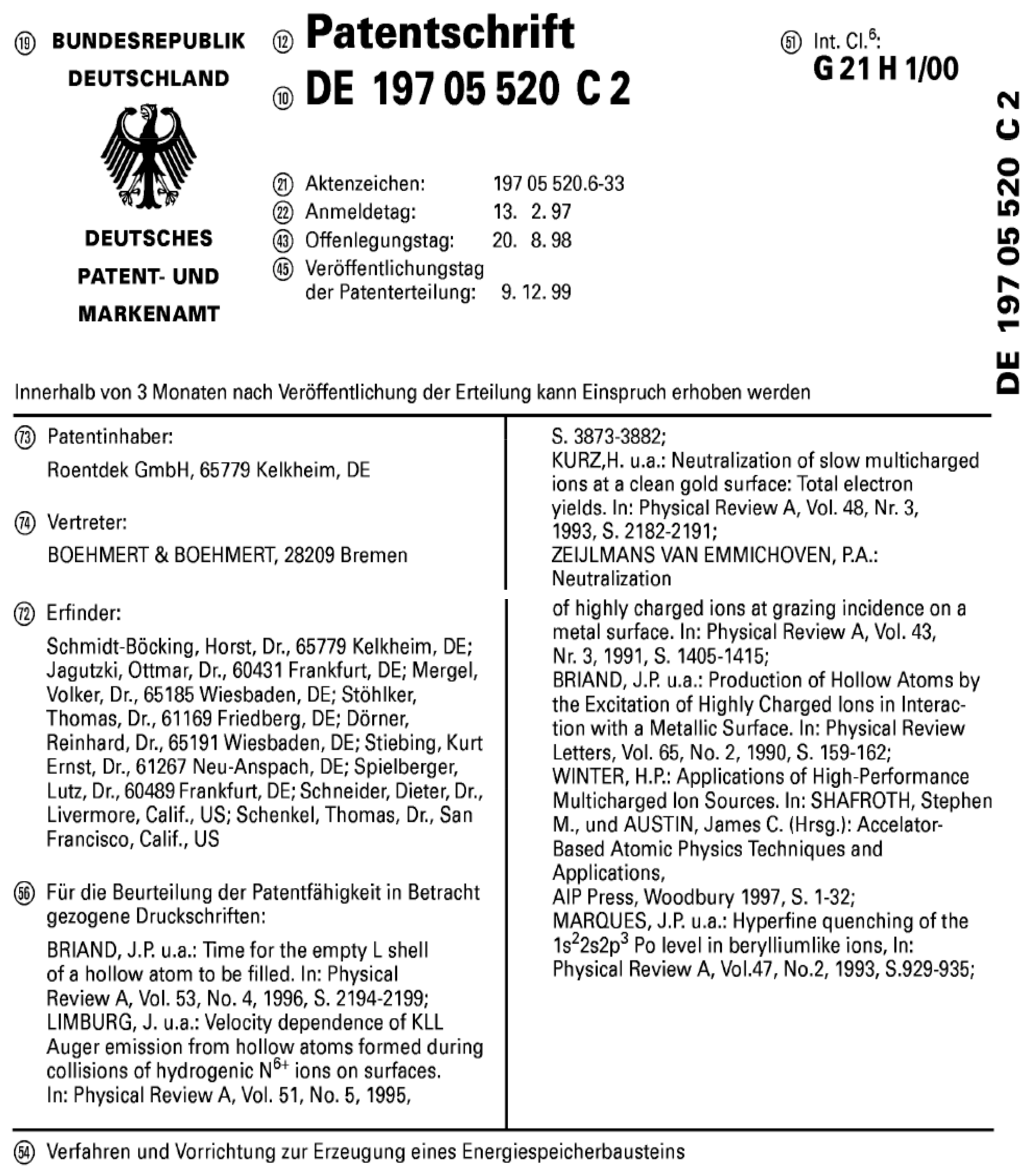
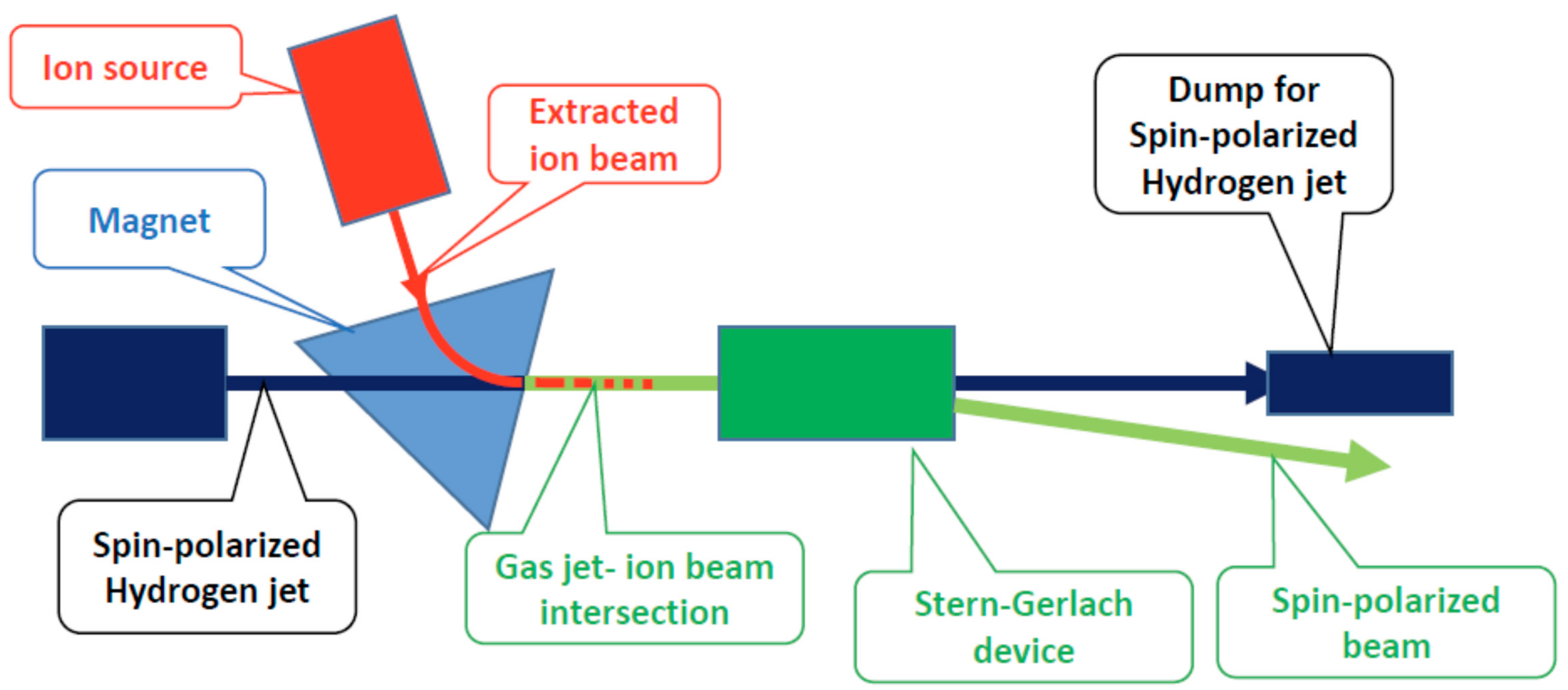
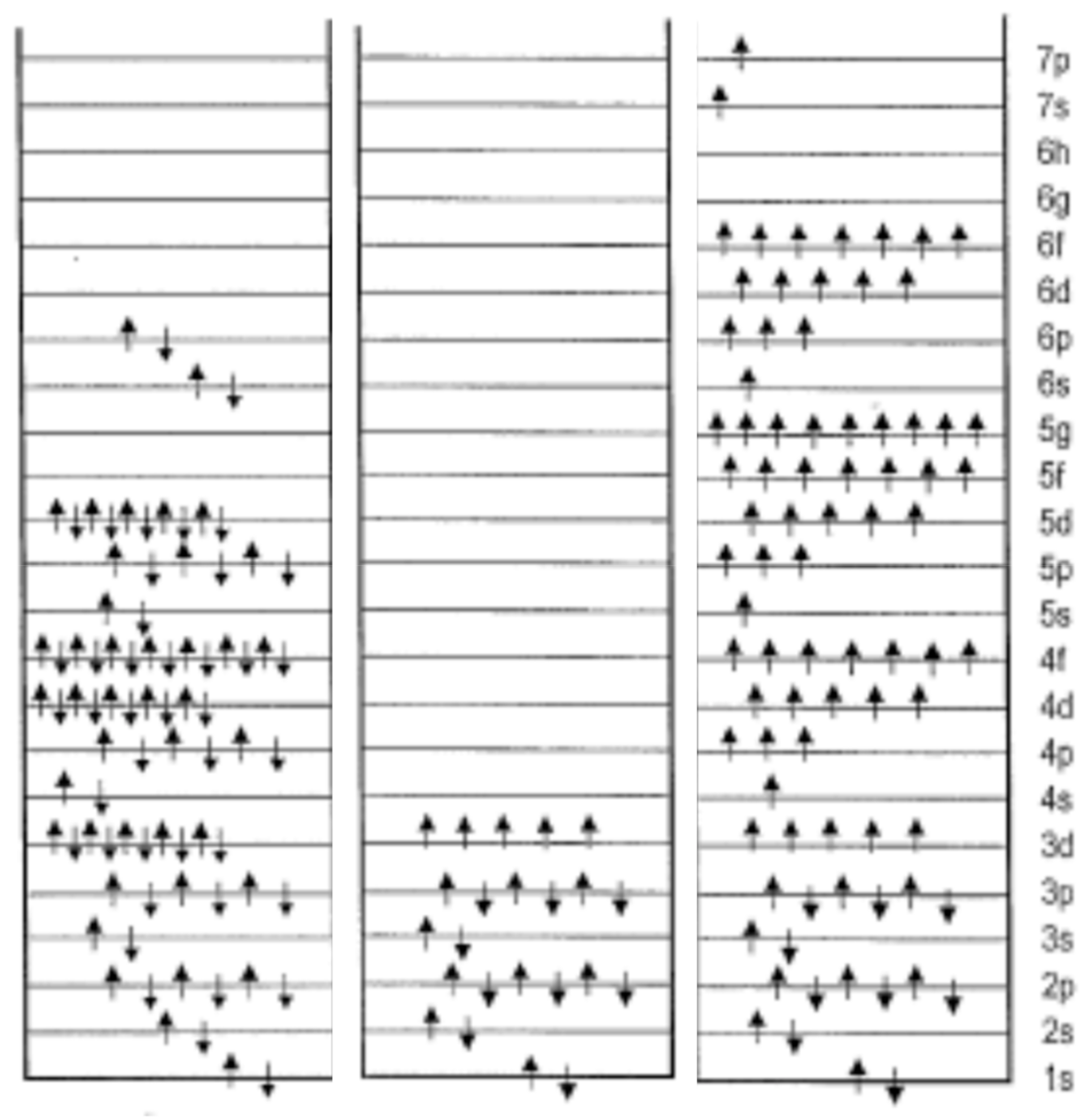
Publisher’s Note: MDPI stays neutral with regard to jurisdictional claims in published maps and institutional affiliations. |
© 2022 by the authors. Licensee MDPI, Basel, Switzerland. This article is an open access article distributed under the terms and conditions of the Creative Commons Attribution (CC BY) license (https://creativecommons.org/licenses/by/4.0/).
Share and Cite
Schmidt-Böcking, H.; Gruber, G. On Producing Long-Lived Spin Polarized Metastable Atoms—Feasibility of Storing Electric Energy. Atoms 2022, 10, 76. https://doi.org/10.3390/atoms10030076
Schmidt-Böcking H, Gruber G. On Producing Long-Lived Spin Polarized Metastable Atoms—Feasibility of Storing Electric Energy. Atoms. 2022; 10(3):76. https://doi.org/10.3390/atoms10030076
Chicago/Turabian StyleSchmidt-Böcking, Horst, and Gernot Gruber. 2022. "On Producing Long-Lived Spin Polarized Metastable Atoms—Feasibility of Storing Electric Energy" Atoms 10, no. 3: 76. https://doi.org/10.3390/atoms10030076
APA StyleSchmidt-Böcking, H., & Gruber, G. (2022). On Producing Long-Lived Spin Polarized Metastable Atoms—Feasibility of Storing Electric Energy. Atoms, 10(3), 76. https://doi.org/10.3390/atoms10030076




